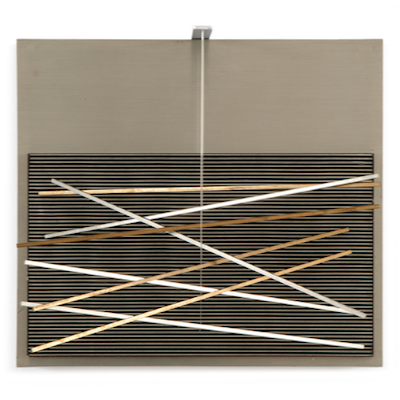
Details
Artist
Styles
Serigraph on Arches Paper - image: 16 × 16 in / 41 × 41 cm; sheet: 27.6 × 20 in / 70 × 51 cm // Pink Composition by Victor Vasarely is a striking serigraph that embodies the principles of Op Art, a movement Vasarely pioneered. The print features a dynamic interplay of geometric forms, with large blue and pink circles embedded in a grid that appears to warp and curve, creating a sense of three-dimensionality and movement. The bold color palette of pink, blue, yellow, and black enhances the illusion of depth and vibrancy, challenging the viewer’s perception. This piece exemplifies Vasarely’s exploration of optical illusion, where simple shapes and colors combine to create a visually engaging, immersive experience.
Pink Composition, c. 1980
form
Medium
Size
70 x 51 cm
- Inches
- Centimeters
Edition
Price
- USD
- EUR
- GBP
Details
Artist
Styles
Serigraph on Arches Paper - image: 16 × 16 in / 41 × 41 cm; sheet: 27.6 × 20 in / 70 × 51 cm // Pink Composition by Victor Vasarely is a striking serigraph that embodies the principles of Op Art, a movement Vasarely pioneered. The print features a dynamic interplay of geometric forms, with large blue and pink circles embedded in a grid that appears to warp and curve, creating a sense of three-dimensionality and movement. The bold color palette of pink, blue, yellow, and black enhances the illusion of depth and vibrancy, challenging the viewer’s perception. This piece exemplifies Vasarely’s exploration of optical illusion, where simple shapes and colors combine to create a visually engaging, immersive experience.
- Recently Added
- Price (low-high )
- Price (high-low )
- Year (low-high )
- Year (high-low )
What is kinetic art?
Kinetic art is an international movement that emerged in the 1920s and gained prominence in the 1960s, referring to art that involves both apparent and real motion. It encompasses any medium that includes movement, either relying on actual motion for its effect or being perceived as moving by the viewer. Early examples include canvas paintings designed to create optical illusions of movement. Today, kinetic art often refers to three-dimensional figures and sculptures, such as those operated by machines or those that move naturally. The movement covers a variety of styles and techniques that frequently overlap.






































































